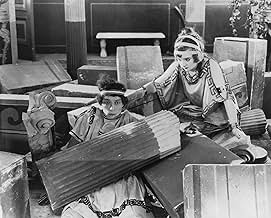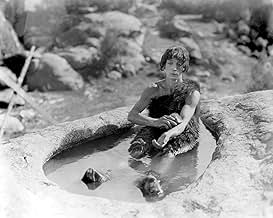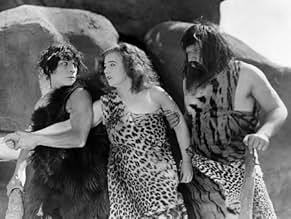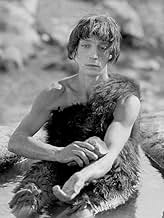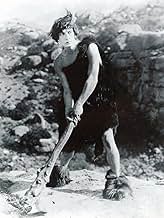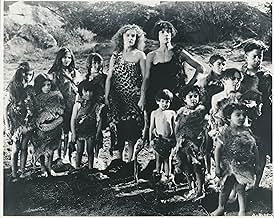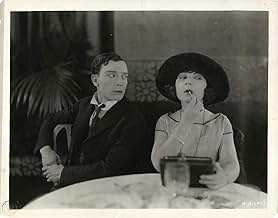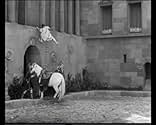ÉVALUATION IMDb
7,0/10
5,6 k
MA NOTE
Ajouter une intrigue dans votre langueThe misadventures of Buster in three separate historical periods.The misadventures of Buster in three separate historical periods.The misadventures of Buster in three separate historical periods.
- Prix
- 1 nomination au total
Kewpie Morgan
- The Emperor
- (as Horace Morgan)
- …
Lionel Belmore
- Undetermined Role
- (unconfirmed)
- (uncredited)
Bernard Berger
- Roman-age child
- (uncredited)
Basil Bookasta
- Stone Age Child
- (uncredited)
George Bookasta
- Stone Age Child
- (uncredited)
George Davis
- Roman Guard Knocked Down
- (uncredited)
Louise Emmons
- Old Fortune Teller
- (uncredited)
F.F. Guenste
- Butler
- (uncredited)
Blanche Payson
- The Amazon
- (uncredited)
Avis en vedette
"The Three Ages," Buster Keaton's first feature-length film after a number of comedy shorts, is his parody of Griffith's "Intolerance." Keaton tells three parallel stories about the perils of romance, one set in the Stone Age, one during the Roman Empire, and one during the 20th century.
In the context of Keaton, I don't see "The Three Ages" given a lot of mention. This is a shame, since while it's not Keaton's finest work, it ranks with his funniest. In one scene, Buster falls into a pit with a lion. Afraid of getting eaten, he pampers the lion and gives it a manicure. What follows is one of the funniest visual gags I've ever seen.
In the context of Keaton, I don't see "The Three Ages" given a lot of mention. This is a shame, since while it's not Keaton's finest work, it ranks with his funniest. In one scene, Buster falls into a pit with a lion. Afraid of getting eaten, he pampers the lion and gives it a manicure. What follows is one of the funniest visual gags I've ever seen.
First time of seeing Buster Keaton's first feature film and I have to admit I liked it a lot and only wish I'd stumbled across it years ago. The Rohauer blurb at the start warns that the Three Ages single nitrate print was rediscovered and salvaged in 1954 just in time before combustion, and many frames that seemed hopelessly glued together were separated. So, it's rocky viewing in places, but I've seen and survived much worse.
It would have been OK as the 3 short films but as a take on Intolerance it's inventive and funny from the start to the finish: In the Stone Age with baddie Wallace Beery riding an elephant and goodie Buster riding a pet brontosaurus; In the Roman Age Buster riding a chariot with wheel locks and adapted for sledging, No Parking signs in Latin; In this technological Age of Speed Need and Greed his car beautifully falls to bits at the first hump. Both him and Beery are after the Girl through the ages, a never ending tussle. Favourite bit: As the caveman he gets knocked backward over a cliff edge but still blows a kiss to the camera - an amazing second or two!
Great stuff, reaffirming my love of silent film comedy.
It would have been OK as the 3 short films but as a take on Intolerance it's inventive and funny from the start to the finish: In the Stone Age with baddie Wallace Beery riding an elephant and goodie Buster riding a pet brontosaurus; In the Roman Age Buster riding a chariot with wheel locks and adapted for sledging, No Parking signs in Latin; In this technological Age of Speed Need and Greed his car beautifully falls to bits at the first hump. Both him and Beery are after the Girl through the ages, a never ending tussle. Favourite bit: As the caveman he gets knocked backward over a cliff edge but still blows a kiss to the camera - an amazing second or two!
Great stuff, reaffirming my love of silent film comedy.
For me, Keaton's decision to make a parody of Griffith's Intolerance so that if the feature (his first) failed he could re-edit and release it as three two-reelers is what diminishes the enjoyment for me. The film jumps back and forth between the three time periods, and so all of them seem to be over before they've really begun, and the film has something of a disjointed feel. Perhaps this is because the film does actually feel as if it is three two-reelers spliced together rather than an actual feature.
The comedy is unevenly paced, but when it hits the mark it is near-perfect. Highlights include Keaton's drunken encounter with Wallace Beery, other diners, and a crab at a restaurant, and the jaw-dropping leap from one roof to another at what looks like hundreds of feet above the ground (apparently the buildings were short sets placed on a bridge overlooking a view of Los Angeles. Just as well, because Keaton failed to make the leap successfully and fell from the second building, a real-life mishap that remains in the film). Keaton slides through a window, across a room, down a pole (at this point we realise he is in a fire station although he doesn't) and lands on the back of a fire engine that returns him to the police station from which he has just escaped. The whole sequence is both side-splitting and astounding. The look on Keaton's face as he looks quizzically up at the pole he has just descended is priceless. Perhaps because of his status as a comic genius we tend to forget how good an actor Keaton was .
I liked the modern sequence best, and had it been released as a short I believe it would be considered one of his classics. The caveman sequence is OK, but the Roman era story tends to drag.
It's been well publicised that this was competition winner Margaret Leahy's only film because she was so untalented as an actress, and it's true she doesn't light any fires while on-screen. But the impact of her ineptitude in front of the camera is cleverly avoided by the likes of Keaton and Beery merely acting around her as if she were just another prop.
Overall, this isn't one of Keaton's best - although that is probably because this is his first feature. Keaton himself thought it was just OK and, given his instinctive sense for what works, perhaps that should tell us all we need to know...
The comedy is unevenly paced, but when it hits the mark it is near-perfect. Highlights include Keaton's drunken encounter with Wallace Beery, other diners, and a crab at a restaurant, and the jaw-dropping leap from one roof to another at what looks like hundreds of feet above the ground (apparently the buildings were short sets placed on a bridge overlooking a view of Los Angeles. Just as well, because Keaton failed to make the leap successfully and fell from the second building, a real-life mishap that remains in the film). Keaton slides through a window, across a room, down a pole (at this point we realise he is in a fire station although he doesn't) and lands on the back of a fire engine that returns him to the police station from which he has just escaped. The whole sequence is both side-splitting and astounding. The look on Keaton's face as he looks quizzically up at the pole he has just descended is priceless. Perhaps because of his status as a comic genius we tend to forget how good an actor Keaton was .
I liked the modern sequence best, and had it been released as a short I believe it would be considered one of his classics. The caveman sequence is OK, but the Roman era story tends to drag.
It's been well publicised that this was competition winner Margaret Leahy's only film because she was so untalented as an actress, and it's true she doesn't light any fires while on-screen. But the impact of her ineptitude in front of the camera is cleverly avoided by the likes of Keaton and Beery merely acting around her as if she were just another prop.
Overall, this isn't one of Keaton's best - although that is probably because this is his first feature. Keaton himself thought it was just OK and, given his instinctive sense for what works, perhaps that should tell us all we need to know...
D.W. Griffith could have made any movie he wanted to after the enormous financial success of "The Birth of a Nation"; he chose to make the most technically ambitious film to that date, "Intolerance". He took a risk with such innovations in film montage and form, and the well-known financial train wreck resulted. Buster Keaton doesn't take that kind of a risk with "Three Ages", a parody of "Intolerance". This is Keaton's first feature-length film of his own (he only acted in "The Saphead"). He had the fallback plan of dividing the three episodes in this feature into three separate shorts, which Griffith did do with "Intolerance". Keaton didn't have to. Chaplin had already succeeded with feature-length comedies, so if Keaton was taking a risk here, it was completely calculated.
Chaplin had already done a parody of another film, too, with "Burlesque on Carmen" (1915). Keaton appears to allude to that parody, as well. The wrestling scene in the Ancient Rome episode references the swordfight that turns into a wrestling match in Chaplin's burlesque. The comical distance from the plot of both scenes is the same, too. Furthermore, Chaplin's film imitated the glossy style of DeMille's "Carmen", and Chaplin's film seemed a tribute to that film. Keaton doesn't attempt the radical editing, narrative structure or monumental nature in his parody, but it seems respectful of "Intolerance" nonetheless. At least, the stories aren't told completely straightforward as in other "Intolerance"-inspired works, such as Dreyer's "Leaves from Satan's Book" (Blade af Satans bog, 1921) and Fritz Lang's "Destiny" (Der Müde Tod, 1921). There is some mild jumping back and forth between episodes.
Where Keaton did take risks, however, is in his physical, daredevil comedy. That's Keaton unintentionally failing to jump across buildings in the modern episode. Reportedly, he was convinced to alter the scene rather than attempt the jump again. And, it wasn't just Keaton who took risks; the anachronistic baseball gag, for example, was rather dangerous. Thus, although in a different way, Keaton, like Griffith, took risks with his big film. And, I think they both succeeded.
Chaplin had already done a parody of another film, too, with "Burlesque on Carmen" (1915). Keaton appears to allude to that parody, as well. The wrestling scene in the Ancient Rome episode references the swordfight that turns into a wrestling match in Chaplin's burlesque. The comical distance from the plot of both scenes is the same, too. Furthermore, Chaplin's film imitated the glossy style of DeMille's "Carmen", and Chaplin's film seemed a tribute to that film. Keaton doesn't attempt the radical editing, narrative structure or monumental nature in his parody, but it seems respectful of "Intolerance" nonetheless. At least, the stories aren't told completely straightforward as in other "Intolerance"-inspired works, such as Dreyer's "Leaves from Satan's Book" (Blade af Satans bog, 1921) and Fritz Lang's "Destiny" (Der Müde Tod, 1921). There is some mild jumping back and forth between episodes.
Where Keaton did take risks, however, is in his physical, daredevil comedy. That's Keaton unintentionally failing to jump across buildings in the modern episode. Reportedly, he was convinced to alter the scene rather than attempt the jump again. And, it wasn't just Keaton who took risks; the anachronistic baseball gag, for example, was rather dangerous. Thus, although in a different way, Keaton, like Griffith, took risks with his big film. And, I think they both succeeded.
This is a pleasant and funny combination of slapstick and satire, period humor and romantic comedy. It does not have quite the number of sustained chase/stunt sequences as in most of Keaton's features, but instead there are a lot of fine subtle gags of all different kinds.
In each of the "Three Ages", Buster and Wallace Beery vie for the affections of the same woman, with amusing and unpredictable results. The simple romantic triangle theme sets up a lot of good material, on the one hand lending itself to a lot of gags about the unchanging nature of romantic courtship, and on the other hand being used for a lot of deliberate anachronisms that are often extremely funny. Beery makes a nice foil for Keaton, and the girl's parents also have some good moments.
This one usually gets lost in the crowd among so many brilliant Keaton masterpieces, but it works very well and is definitely worth seeing for any fan of silent comedy.
In each of the "Three Ages", Buster and Wallace Beery vie for the affections of the same woman, with amusing and unpredictable results. The simple romantic triangle theme sets up a lot of good material, on the one hand lending itself to a lot of gags about the unchanging nature of romantic courtship, and on the other hand being used for a lot of deliberate anachronisms that are often extremely funny. Beery makes a nice foil for Keaton, and the girl's parents also have some good moments.
This one usually gets lost in the crowd among so many brilliant Keaton masterpieces, but it works very well and is definitely worth seeing for any fan of silent comedy.
Le saviez-vous
- AnecdotesThe most famous stunt in the movie was actually built around what went wrong with the original stunt. Buster Keaton intended to leap from a board projecting from one building onto the roof of another building, but he fell short, smashing into the brick wall and falling into a net off-screen. He was injured badly enough to be laid up for three days. However, when he saw the film (the camera operators were instructed to always keep filming, no matter what happened), he not only kept the mishap, he built on it, adding the fall through three awnings, the loose downspout that propels him into the firehouse and the slide down the fire pole.
- GaffesIn the medium shot of the Stone Age soothsayer scene, Buster's hands are resting together near the side of the turtle. But in the cut to a close-up, we see only a hand double's right hand, and it's directly in front of the turtle's mouth. (It's clearly a hand double, since Keaton was missing his right index finger tip.)
- Autres versionsIn 1995, Film Preservation Associates copyrighted a version with an orchestral score; no details were specified on the print.
- ConnexionsEdited into The Golden Age of Buster Keaton (1979)
Meilleurs choix
Connectez-vous pour évaluer et surveiller les recommandations personnalisées
- How long is Three Ages?Propulsé par Alexa
Détails
Box-office
- Brut – à l'échelle mondiale
- 177 $ US
- Durée1 heure 3 minutes
- Couleur
- Mixage
- Rapport de forme
- 1.33 : 1
Contribuer à cette page
Suggérer une modification ou ajouter du contenu manquant

